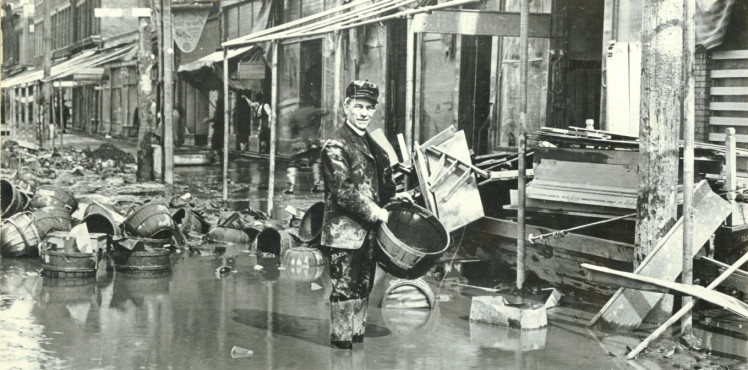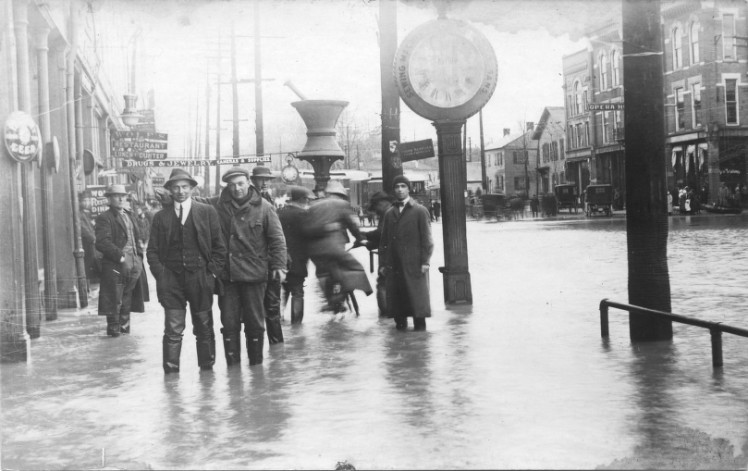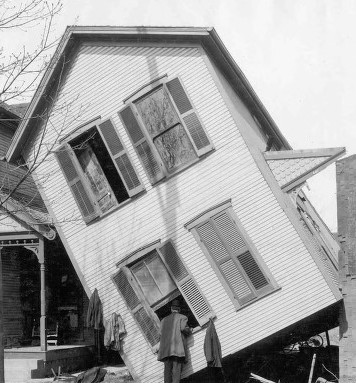1913 Floods in Ohio
News and weather experts around the state are writing articles and making forecasts about possibility of breaking rainfall records around the state.Let’s all cross our fingers and hope that mother nature lets up a bit – we certainly don’t want a repeat of of the 1913 statewide flood, or the 1937 Ohio River flood!
Ohio Memory has tons (gallons?) of flood pictures, and it was really difficult to choose which one to share, so here are a few from the 1913 flood.

Rev. Elijah Coil (1858-1918) was a minister of the First Unitarian Universalist Society in Marietta from 1895 until his death in 1918. He was known for forceful sermons and his poetry. Coil served congregations in Yellow Springs; Cincinnati; Westborough, Massachusetts; and Marietta.
In late March 1913, an unusually heavy rainstorm moved into Ohio. It rained steadily for five days and the streams throughout the state rose rapidly. By the third day of the downpour, levees were breached and many towns suffered disastrous flooding. When the flood waters receded, the destruction was staggering. Tons of mud and debris covered the streets, homes, businesses and factories. Buildings in the heart of the town were either burned or swept away and the bridges were gone.

This photograph, taken looking west on State Street in Fremont, shows several men standing in the flooded downtown area. The 1913 flood in Fremont was caused by 3 days of rainfall, between March 23 and March 26. Floodwaters of the Sandusky River rose to 6 feet higher than they had ever been recorded. Some 550 homes were flooded, and approximately 50 of these homes were rendered uninhabitable or were totally destroyed. 4 out of 5 bridges in Fremont washed away.
The Flood of 1913 is known as the greatest natural disaster in Ohio history. Most communities located along rivers throughout the state experienced flooding with the most severe flooding occurred along the Great Miami River, in Dayton.

Within a 3 day period, 8 to 11 inches of rainfall fell throughout the Great Miami River Basin Watershed. This rainfall, coupled with frozen ground, caused the Great Miami River and its tributaries to overflow flooding every city along the way. The amount of water that passed through the river channel in Dayton equaled the amount of water that flows over Niagara Falls in a 30 day period.
Check out Ohio Memory to see pictures from the 1937 Ohio River flood, or more pictures from 1913 flood.
Thank you to Carla Zikursh, Ohio History Service Tech Corps member (2010-2011) at theOhio History Connection, for this week’s post!



Leave a Reply
You must be logged in to post a comment.